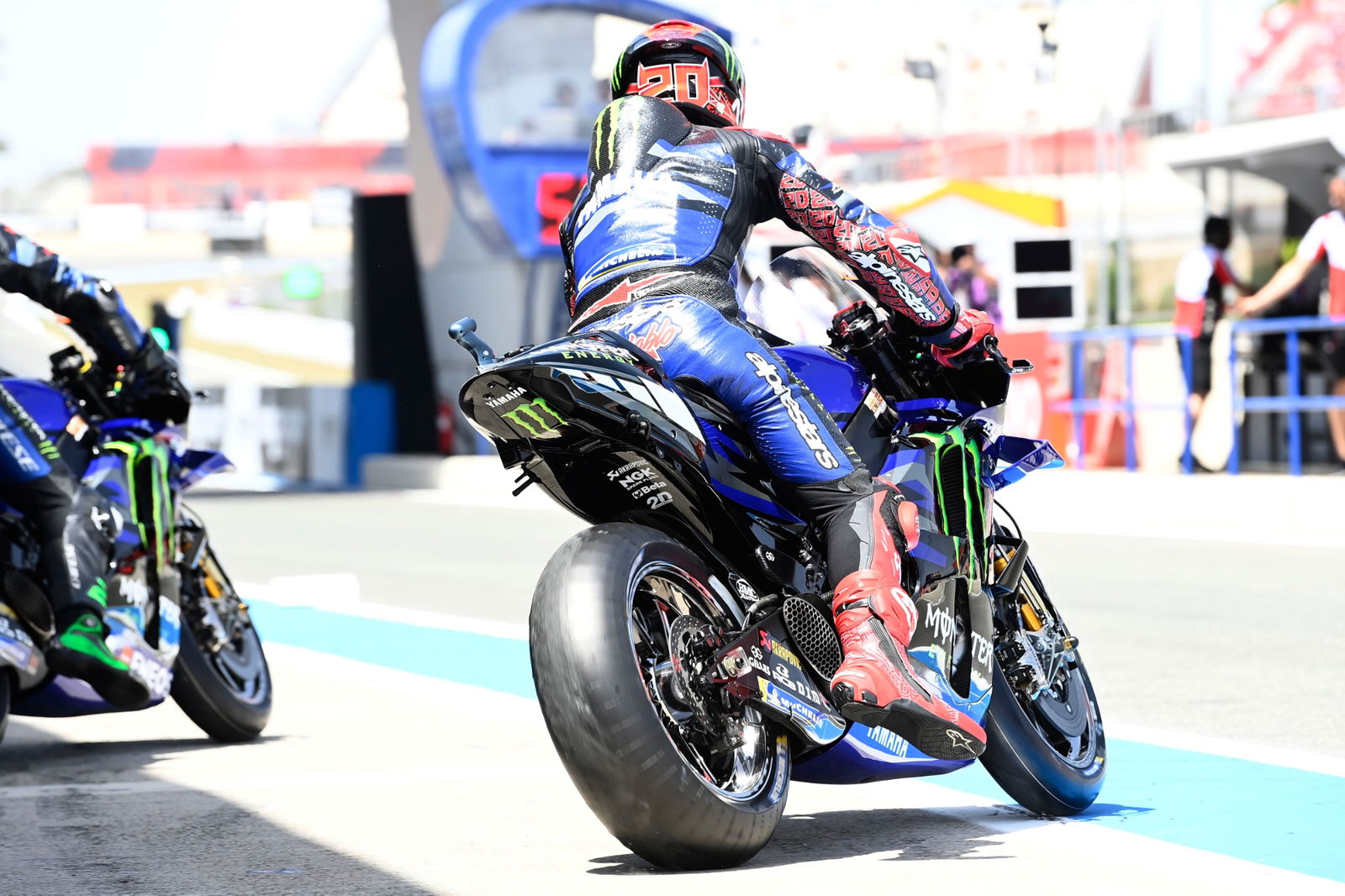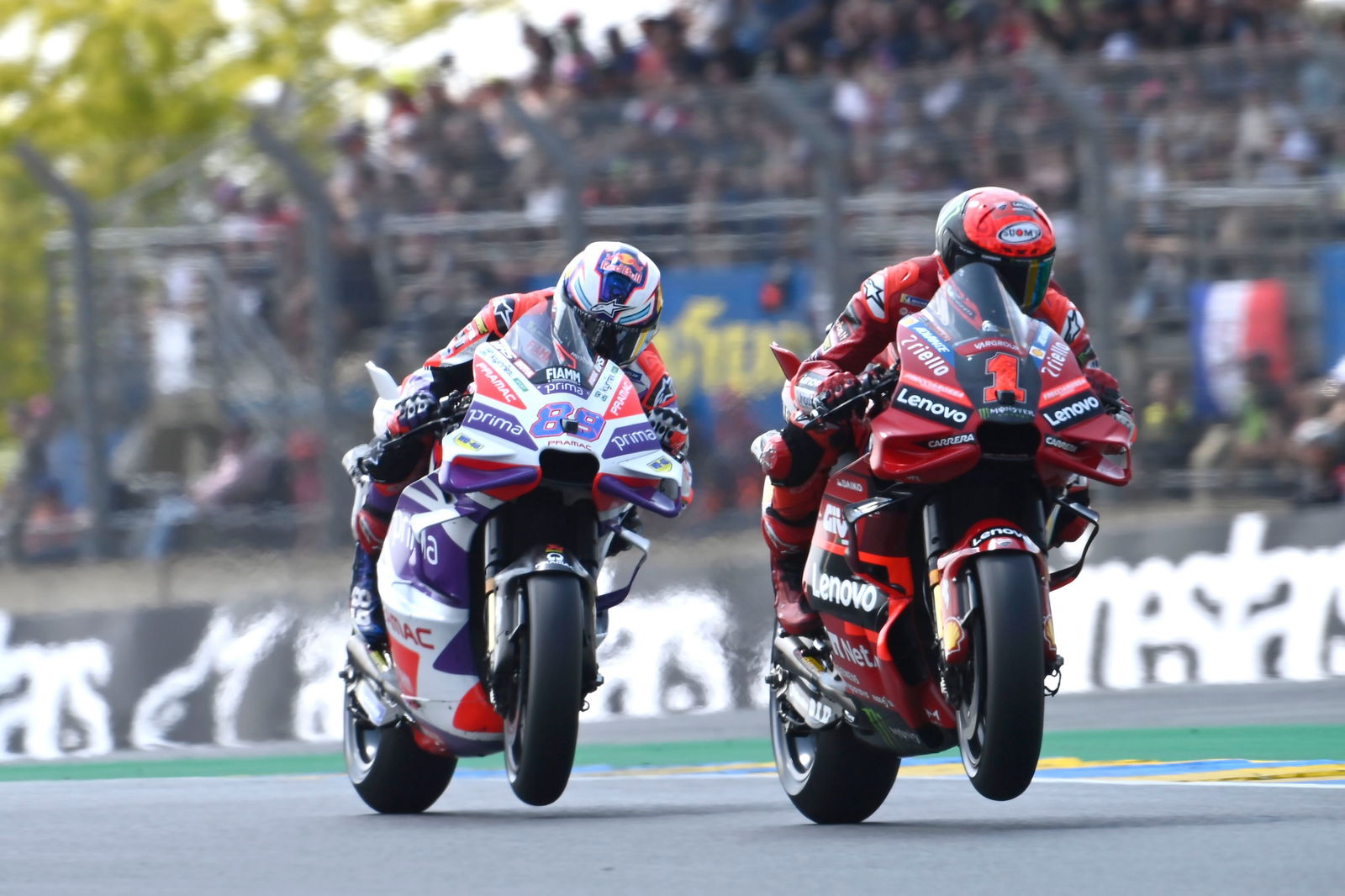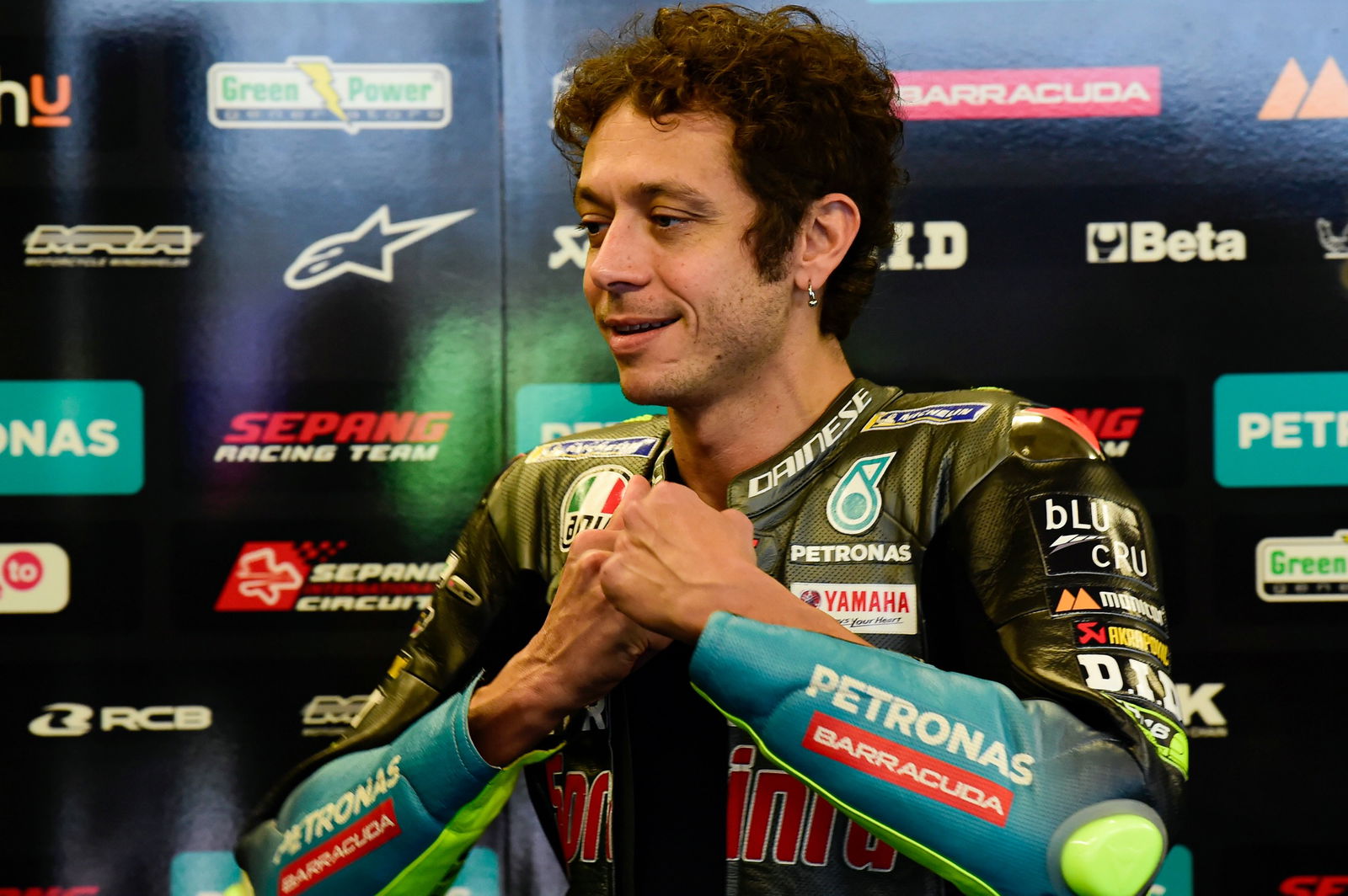Should Inline4 MotoGP engines get concessions?

Following Suzuki’s exit, Yamaha is now the only MotoGP manufacturer without a V4 and is currently languishing fifth and last in the constructors’ standings.
Former world champion Fabio Quartararo, who has taken just one podium from ten races this season, is pushing for big changes to revive the M1 project.
In particular, the Frenchman has made clear that the 2023 engine upgrades are still not enough to allow them to run the kind of high downforce levels of their main rivals.
- Poncharal blasts Bagnaia for factory, satellite ‘nonsense’
- Future of MotoGP? Honda, Yamaha, Kawasaki, Suzuki to collaborate on small hydrogen engines
- Keith Huewen on Bagnaia, Vinales clash: “Hard not to lash out”
Starting a new V4 project would be a massive commitment for Yamaha, and there’s no guarantee that it would solve the M1’s issues in the foreseeable future.
Suzuki also proved that an Inline was good enough to win two of the final three races last season, but perhaps it’s time to revive MotoGP’s successful concession system, - redundant following Aprilia’s graduation - to allow, for example, extra testing for manufacturers at the bottom of the constructors’ standings?
Or maybe the MotoGP technical rules, which already offer different minimum weights (150kg for up to 800cc, 157kg for 801cc-1000cc - the unanimous choice) could offer a small perk for an Inline engine layout, such as a slight increase in the current maximum cylinder bore of 81 mm?
Keeping different engine designs competitive through technical regulations is a problem World Superbike has long grappled with and perhaps it’s time for MotoGP to also accept that some kind of balancing is needed to avoid all factories converging on one dominant engine design. Especially in a single tyre championship.
Both possibilities were discussed in a recent issue of the Crash.net MotoGP podcast featuring Keith Huewen, when replying to a listener question about how much influence the Yamaha riders have in bike development.
Former grand prix rider and British champion Huewen said: “Maybe Suzuki saw the writing on the wall for an [Inline] 4-cylinder motorcycle. Maybe they were topped-out on their development and knew that they had to go V4-style to get the type of power that everybody else had. And maybe that's why Suzuki pulled the plug, even though they'd signed for another five years.
“There will have been other business reasons behind it I’m sure, but on reflection perhaps that was an element of their decision to pull out because they were at the end of their development with that style of power package.
“And maybe Yamaha are there as well.
“The four-cylinder cross-plane is a fast motorcycle on its own, when Quartararo can run his lines. But you can't do that in a race situation where everyone else's style and performance means putting the power down in a different place on the track. For Quartararo or whoever's riding the bike, it will mess up their corner speed.
"Again, this is what worries me about whether we will be in a situation where we'll lose someone like Yamaha to the series, because the investment in changing their philosophy of powertrain is huge. And [a V4] goes against their marketing in terms of what they've got going on in the road bike scenario.
“I just think to myself sometimes that maybe Suzuki saw where their future lies and dived out of the game. Will Yamaha do the same?”

Crash.net MotoGP editor Pete McLaren added: “Taking that a little bit further Keith, maybe in the rules package that is being decided for the future, 2027 onwards, there should be slightly different technical rules for Inline 4 cylinders. In the same way that we used to have different technical rules for different numbers of cylinders, just to try and keep that engine variety in MotoGP rather than everybody on V4s.”
Huewen responded: “Let me expand that out, because I think that's a really good direction of travel: Alter the concessions package so the manufacturers that are clearly in trouble can test extra stuff.
“I think that's where Yamaha is at. The limited testing is an issue. I think the concessions could be expanded. It costs really nothing and they can try stuff around the races perhaps. Book a test the day after or something, without going somewhere across the other side of the world.
“That's the issue I think with Yamaha. They should really be able to test with their main race riders and they need concessions to be able to do that.
“So maybe there's a position within the new technical rules package, when it comes, that concessions can be modified a little bit and fine-tuned.”
Returning to this season, McLaren wondered whether it might have been useful if Morbidelli had homologated the new bigger aero he ran throughout winter testing for the start of this season.
“Maybe they could have used Morbidelli a bit like Ducati have used Pramac as far the aero packages. Pramac is running that new ‘Aprilia-style’ ground effect fairing while the factory team has the evolution of the previous Ducati fairing.
“So maybe Morbidelli could have kept the new bigger aero, instead of joining Quartararo on the old smaller aero, just so they were gathering data on both in all these races.
“OK, it might not have been ideal for Morbidelli, but maybe with hindsight they could have said, ‘Look Franco, Fabio likes the old one, but we really want you to run this new one. We think it has much more potential’.
“Then Yamaha could have used the data gathered from both aero packages to help deliver their one aero upgrade they are allowed during the season.
“The downside is that it would have meant two different spec Yamahas on the grid, so exchanging tyre and set-up data would have been harder. Which comes back to the problem of only having two bikes.”

